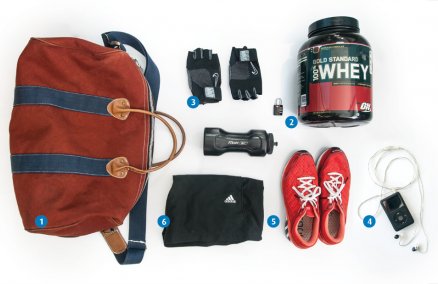The name Sam Phraeng may not ring a bell among the young and hip of Siam Square and Thong Lor, but this old neighborhood, including Phraeng Phuton, Phraeng Nara and Phraeng Sapphasat, is home to the city’s top eats, some of which you cannot find elsewhere. It’s a good place to revisit the old favorites.
Kai Yang Boran
474-476 Tanao Rd., 02-622-2349. Open daily 8am-9pm.
Located just a few steps from Chao Pau Seau Chinese Shrine is Kai Yang Boran. The restaurant is simply furnished with wooden tables closely spaced to accommodate as many people as possible. Despite its no-brainer décor, Kai Yang Boran has managed to attract lots of celebrity diners, whose photos cover the walls, with its full course Isaan feast.
The deal: The staff is quite friendly, but not so knowledgeable. From their accents, we guess most of them are Burmese. It’s no use asking for recommended dishes because the only answer is somtam. The best bet is what the restaurant is named after, kai yang (roasted chicken). The recipe is taken from Suphanburi, the owner’s hometown.
The price: Starts at B30 for somtam. The whole chicken is B160, half is B85.
40-Year-Old Raat Naa
514 Tanao Road, 02-622-1910 ext. 1, 05-169-6569. Open daily 9am-9:30pm.
As its name suggests, raat naa is the specialty at this eatery. Originally, the shop was in Samyan market but moved to its present location in the late 1990s. The grandpa’s recipe, however, has passed unchanged through generations for four decades.
The deal: The secret of 40-Year-Old Raat Naa, the sibling owners reveal, is the tender pork. Each day they have to prepare over 30 kilos to cater to the customers. Special attention is paid to make sure the pork is well soaked in a secret marinade overnight until it absorbs all the flavors. The menu is short and easy: Just choose sen yai, sen mee or mee krob. Pad see iew (stir-fried noodles with egg and meat), is also tasty and not oily at all.
The price: Raat naa with pork is B25, with seafood is B50. Pad see iew is B30.
Pa Thong Go Sawoei
540 Tanao Road, opposite Bangkok Bang, 02-222-2635. Open daily 5-10am, 5-10pm.
This take-away shop does one thing—pa thong go—and does it very well. The kind uncle has been sautéing the crispy Chinese pastry for over 50 years.
The deal: Crispy and airy, pa thong go, which has been recommended by food critic Mae Choi Nang Ram, takes center stage. It’s also a royal favorite. The uncle proudly reveals HRH Princesses Somsavali and Bajra Kittiyabha used to send bodyguards to buy his crusty fare, hence the word sawoei, a royal word for eating.
The price: B10/4 pieces, but opt for a set (B20-B40), which includes sangkhaya (Thai custard). It makes a nice breakfast. Pa thong go usually runs out very quickly, so go early.
Phraeng Nara Pork Balls
544 Tanao Road, 01-483-2347. Open daily 10am-10pm.
Right in the front of Phraeng Nara corner is Phraeng Nara Pork Balls. We don’t know anything much about this stall because vendor Khun Tookta is ever busy grilling. So the conversation kind of goes like this:
How many sticks you churn out each day?
“Don’t know. I don’t keep a record.”
How long have you been here?
“Can’t remember.”
Any secret recipes?
“No.”
So we’ll have two sticks then.
“Here. B10.”
The deal: It’s all about pork balls. Grilled hot on the spot, these pork balls are made entirely with pork, no starch or additives.
The price: B5/stick.
Khanom Bueang Boran
91 Phraeng Nara Road, 02-222-8500. Open daily 10am-6pm.
One of the oldest shops in the Sam Phraeng area, Khanom Bueang Boran is tucked in a soi opposite the Bangkok Bank. Auntie Somsri is long well known for her khanom bueang boran (original Thai crispy crepe), the recipe for which is from the kitchen of Prince Narathip Phraphanphong in the reign of King Rama 5.
The deal: There are two variants of the crispy crepes to choose from: The sweet filling includes foi thong (Thai dessert), raisins, sweetened diced squash and coconut, while the salty style appeals with savory minced shrimp. Unlike the modern version, traditional khanom bueang isn’t filled with cream, but is coated with a thin layer of Thai custard. To avoid disappointment, head there before 3pm.
The price: Prices range from B10-50, depending on size.
Ko Phanit
431-433 Tanao Road, 02-221-3554. Open Mon-Sat 6:30am-7pm.
Ko Phanit needs no introduction. It was founded in 1929 by Karb Chiebchalard, whose initial has become widely known as the symbol of one of the best sticky rice shops in town. However, the brain behind the renowned khaoniew moon is not Karb, but his wife Sarapee who adopted the cooking tips and tricks from her mother.
The deal: The take-away shop sells only sticky rice. but you can buy juicy mangoes at two hawkers nearby. Sticky rice is blended with sugar and coconut milk, which yield silky texture and smooth creamy taste. Goes great with Ko Phanit’s homemade sangkhaya.
The price: Sticky rice is B110/kilo. A bowl of sangkhaya is B30.
441 Tanao Road, 09-788-6417, 01-4822377. Open Mon-Sat 10:30am-10pm.
Go straight from Ko Phanit and you’ll find Nom Jo. A few years ago, it was just a small cart attracting customers only with hot fresh milk and roasted bread, but now Nom Jo has expanded into a proper shop.
The deal: In addition to the all-time favorite khanom pang sangkhaya (bread topped with Thai custard), owner Jo just introduced two new toppings to go with roasted bread: chocolate with banana and corn soup. The menu also sees many hearty dishes from pork congee and Chinese dumplings to pork steak.
The price: Prices range from B6 for roasted bread to B65 for steak.
Classic Chows: Part 2






















